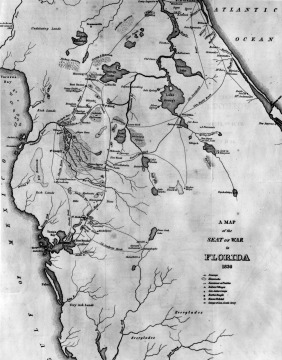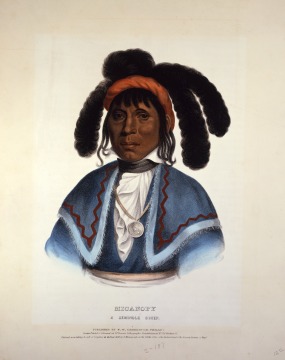1832: Some Seminoles, Creeks evade U.S. forced relocation
When the U.S., enforcing the Removal Act, coerces many Seminoles to march to Indian Territory (which is now known as Oklahoma), some Seminoles and Creeks in Alabama and Florida hide in swamps to avoid forced removal.
The descendants of those who escaped have governments and reservations in Florida today.
- Theme
- Federal-Tribal Relations, Land and Water
- Region
- Great Plains, Southeast
Map of the Second Seminole War, 1836. After the U.S. took control of Florida in 1821—instigated in part by fighting between U.S. forces led by General Andrew Jackson and the Seminoles in North Florida in 1817 and 1818, referred to as the First Seminole War—the government negotiated the Treaty of Moultrie Creek in 1823 to establish a Seminole reservation in Central Florida.
Courtesy State Library and Archives of Florida
Seminole Chief Micanopy, from oil painting by Charles Bird King, 1826: King painted from life leaders of at least twenty tribes who visited Washington, D.C. The portraits were later reproduced as hand-colored lithographs in History of the Indian Tribes of North America, 1837–1844
Courtesy of the State Library and Archives of Florida

